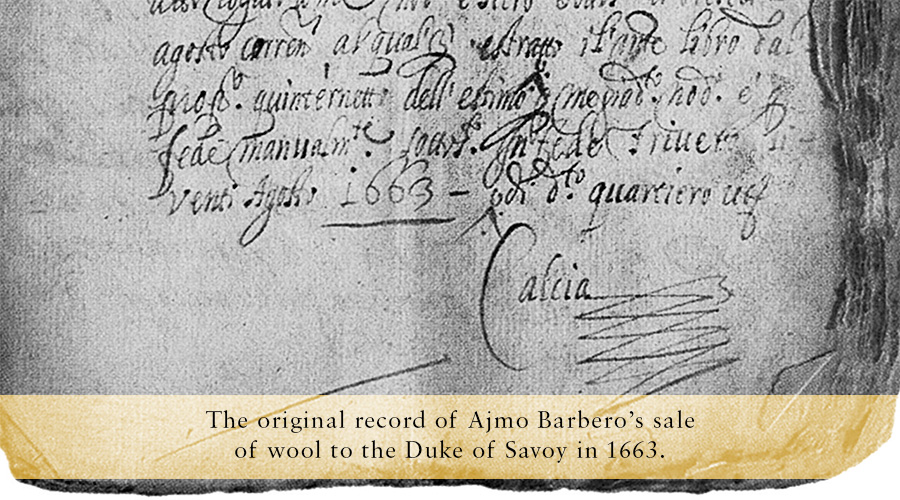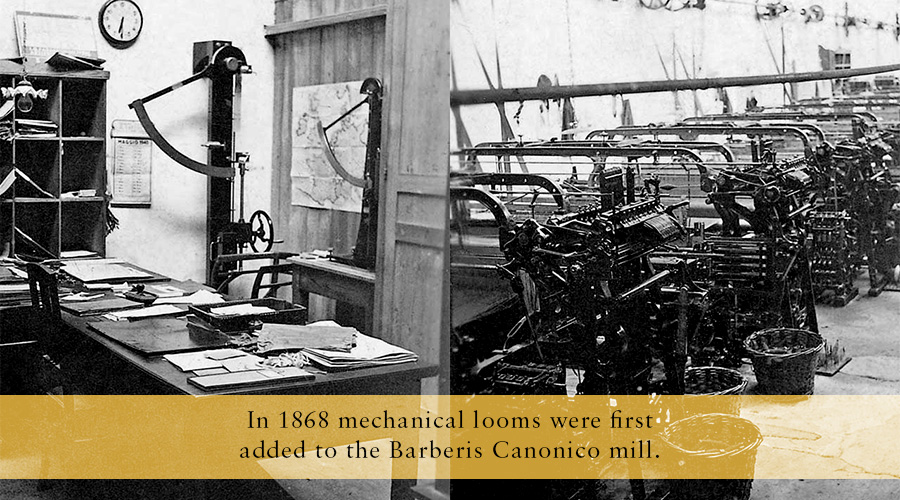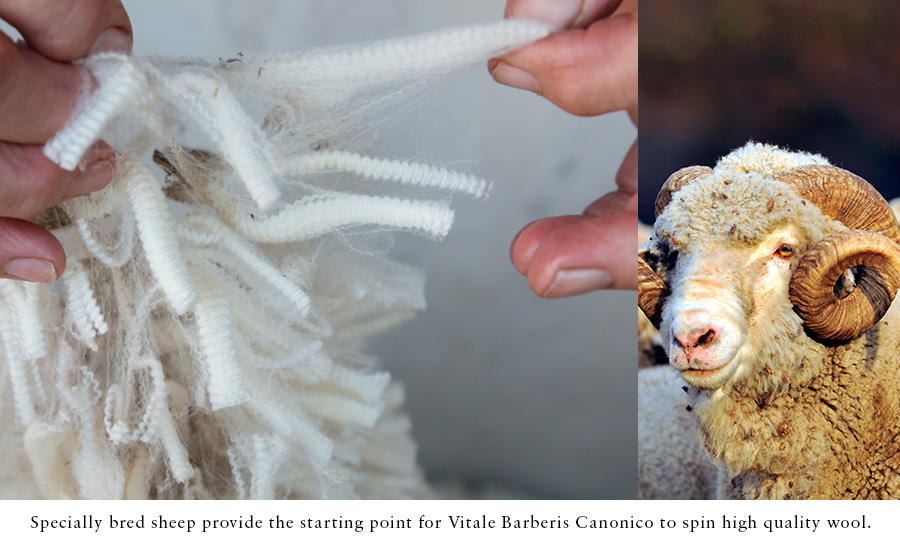How Biella Became the Wool Capital of the World

In the world of tailored suits there is one place that stands above all others as the capital of cloth, the first wonder of the world of wool. That place is the Biella region of northern Italy. Why do those who love tailored suits hold this place in such high esteem? Because you can’t make a great tailored suit without two things—a great tailor and great cloth. So when the greatest tailors in menswear want the world’s greatest cloth, they look to Biella. There they find beautifully designed and expertly woven suiting fabrics like the Super 150s, 2-ply fabrics made by Vitale Barberis Canonico that are part of the new Italian fabric collection from Black Lapel.
When the greatest tailors in menswear want the world’s greatest cloth, they look to Biella.
The story of how Biella came to be known for world class wool goes back as far as people have been living in the area. The rugged, mountainous region surrounding the town of Biella left the early inhabitants with limited options for making a living. When the products that naturally grow in the region, rye and chestnuts, didn’t yield enough produce to sell, the locals turned to raising sheep on the the land. They found the terrain well suited for their flocks and soon many people began to make a living from spinning and weaving wool.
What’s in a Name
One such weaver was Ajmo Barbero (remember that name), who is cited on a receipt dating back to 1663 as the seller of a large quantity of gray twill to the region’s leading nobleman, The Duke of Savoy (remember that name too). The receipt certifies that Barbero was in business over 400 years ago. This is significant because Ajmo Barbero would eventually pass down his weaving craft, making it a family business.

In Northern Italy, the name Barbero is extremely common. So much so that the town of Barbero gained its name from the families who lived there. Later, the tables would turn and the families would adopt names like Barberis, meaning “of Barbero.”
Their name may derive from the family’s propensity for becoming men of the cloth, but the name Barberis Canonico became most famous for a man of the literal cloth.
Ajmo Barbero’s family was one of those who took on the Barberis moniker. In the mid-19th century, after three members of the family went into the priesthood, the family would further distinguish themselves by addingCanonicoto their name and becoming Barberis Canonico or “The family from Barbero who studies the biblical canon.”

While their name may derive from the family’s propensity for becoming men of the cloth, the name Barberis Canonico became most famous for a man of the literal cloth, the modern patriarch of the family for whom the famous mill is named, Vitale Barberis Canonico.
The Loom Boom
What had begun out of necessity had turned into the center of the Biellese economy. By 1887 there were 18 manufacturing plants, 126 mechanical looms, 714 manual looms and 1,700 employees in the wool trade in Biella. This boom in large-scale weaving coincided with the advent of photography, making it almost impossible to find a photo of the Biella region without a chimney stack from one of the spinning factories in the shot.

Something In the Water
The Vitale Barberis Canonico mill, and the many more that have come to inhabit the region over the years, found a home in Biella partly because of the water.

Entering The Modern Age
In the middle part of the century, the Barberis Canonico business was passed down to Vitale, who oversaw massive upgrades to the company’s capacity and is cited as the modern patriarch of the family. He is the father or grandfather of many of the managers of the company. All you need do to understand how Vitale is alive and well in the company is look at a recent family portrait. When asked to sit for the portrait, the seven members of the family who are involved in the day-to-day operation brought a photo of Vitale to be included in the picture. Vitale Barberis Canonico is not just the name of the company, but the spirit of the company.
The secret to success for Vitale Barberis Canonico was the fleece that Vitale’s son, Alberto, found in Australia.
But don’t let the centuries old family business story fool you. The mill at Vitale Barberis Canonico is a thoroughly modern facility. Starting with Vitale’s investments in faster, higher capacity machines, the company has pioneered technological advancements in the making of cloth. His son Alberto took over the reins of the technical side of the business in 1970, putting his mechanical engineering degree to good use installing new machinery and adding even more capacity.

Great Biellese Wool Takes Shape
The Savoy Line from Black Lapel
What does world famous wool look like in the hands of a great tailor? The Vitale Barberis Canonico team is called the designers behind the designers because they supply cloth to some of the most well-regarded fashion houses in the world. And now, you can find out what Black Lapel’s trademark flawless fit looks like with their cloth.
Luxury from start to finish
Named after the noble house that ruled much of Italy for centuries (and the Duke who purchased that first batch of wool from Ajmo Barbero), The Savoy Line is made with Italian fabrics of a quality that befits this pedigreed name.

Only the finest fleece
While there are half a million farms producing wool from over 1 billion sheep worldwide, the wool for The Savoy Line of suits starts out as the prized fleece of those specially bred Australian sheep. In the hands of the master weavers at Vitale Barberis Canonico, it is processed and woven into a line of 2-ply, Super 150s wool producing a remarkably soft hand, elegant drape and impressive bounce, which gives the fabric its wrinkle resistance.
Meticulous Craftsmanship
Expert tailoring, made to your exact measurements
From these raw materials The Savoy Line is cut and constructed into flawless fitting clothing by Black Lapel’s own master tailors. The suits come standard with a full canvas make to better mold to your body with wear and include subtle details of distinction like barchetta chest pockets and Milanese lapel buttonholes. These details go into every item in The Savoy Line. Check out this impeccably crafted collection here.
Your Next Move:
Like What You See? There's More.
We'll send you style advice and intel for the modern man.


Look forward to being in Biella in April to visit VBC Merino Woolen Mill